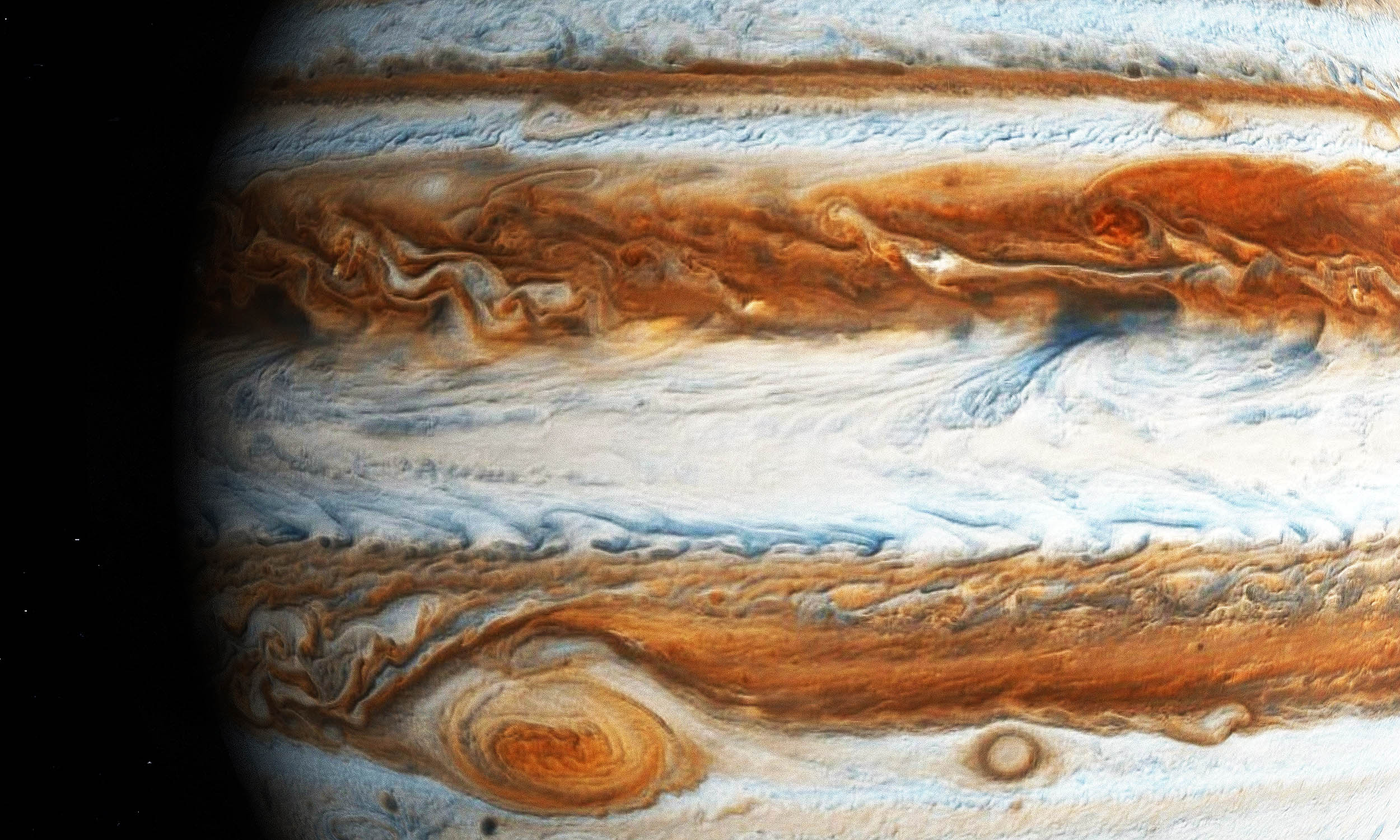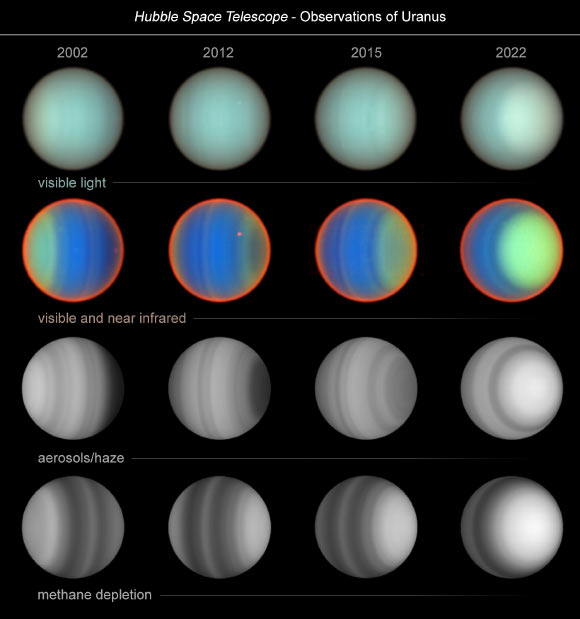
20 years of observations have given us more knowledge about the icy giant.

The JWST shows that ice on Europa is developing at different rates in different places, such as Tara Regio, where crystalline ice (lighter colors) is found on the surface as well as below the surface.

After a decade of searching, NASA's MAVEN (Mars Atmosphere Volatile Evolution) mission has, for the first time, reported a direct observation of an elusive atmospheric escape process called sputtering.

A US-trio appears to have discovered a distant dwarf planet with a 25,000-year orbit bringing it into the ring of icy rocks around the solar system - the Oort cloud.

Dangerous rocks may co-orbit with Venus, but new research suggests only a space-based mission can prove it.

New research suggests that Jupiter used to be at least twice as big as it is today . Over time, the bloated world cooled off, contracting to the relatively humbler size it is today.

Anew study said the streaks aren’t caused by water. Instead, the study suggests, the streaks are due to wind and dust.

Data from NASA's Magellan mission suggests Venus could be more geologically active than previously thought. The data shows compelling evidence for ongoing tectonic activity shaping Venus's surface features.

Now, the unique capabilities of the NASA/ESA/CSA James Webb Space Telescope are providing new insights into the Jovian aurorae.

Evidence is mounting that a secret lies beneath the dusty red plains of Mars, one that could redefine our view of the Red Planet: a vast reservoir of liquid water, locked deep in the crust.

Planetary scientists research the complex asteroid Vesta which may possess the same fundamental architecture as Earth such as the crust.

New research finds that despite large rivers and seas of liquid methane, Saturn's moon Titan seems mostly devoid of river deltas.

The distribution of valley heads on Mars matches predictions for a climate that includes precipitation rather than just runoff from melting ice caps.

Slushy hail, made of water and ammonia, may form during lightning-packed storms, giving researchers fresh clues about what lurks beneath the planet’s colorful cloud tops.

A 20-year Hubble study of Uranus provide valuable data for understanding the atmospheric dynamics of this distant ice giant, which can serve as a proxy for studying exoplanets of similar size and composition.